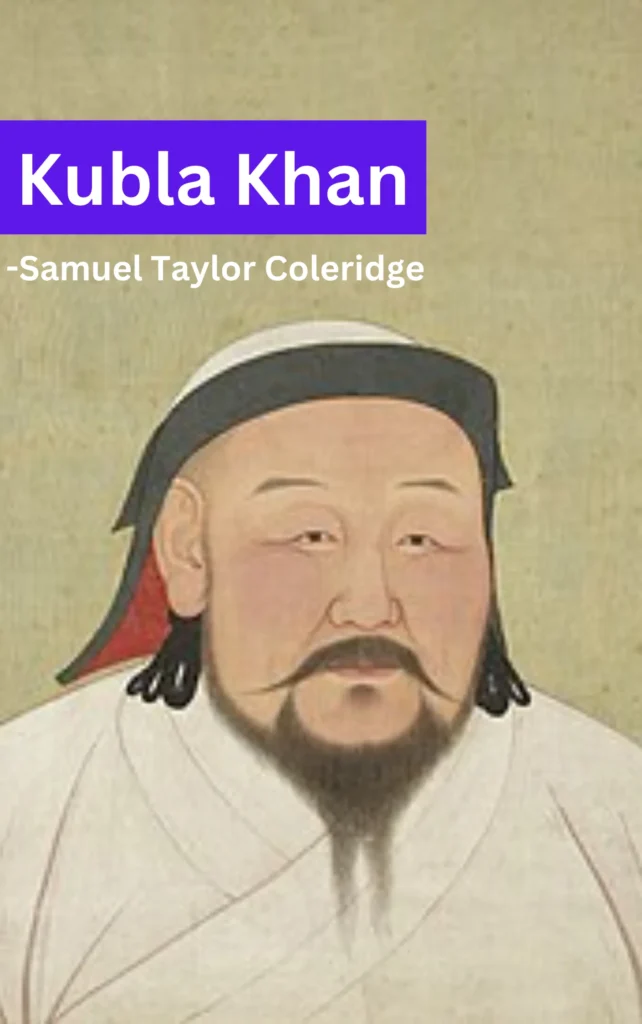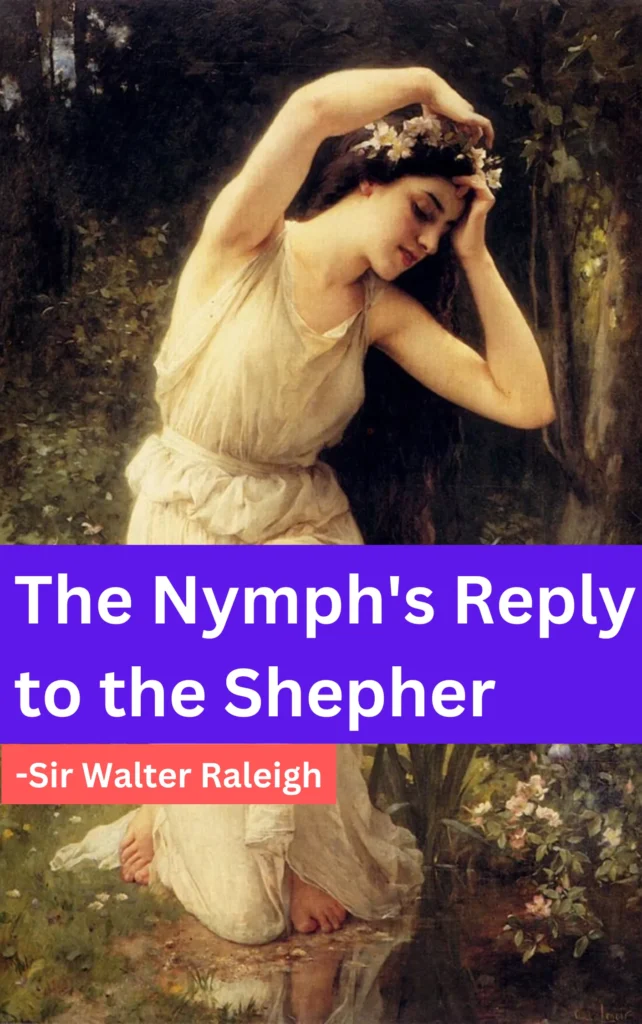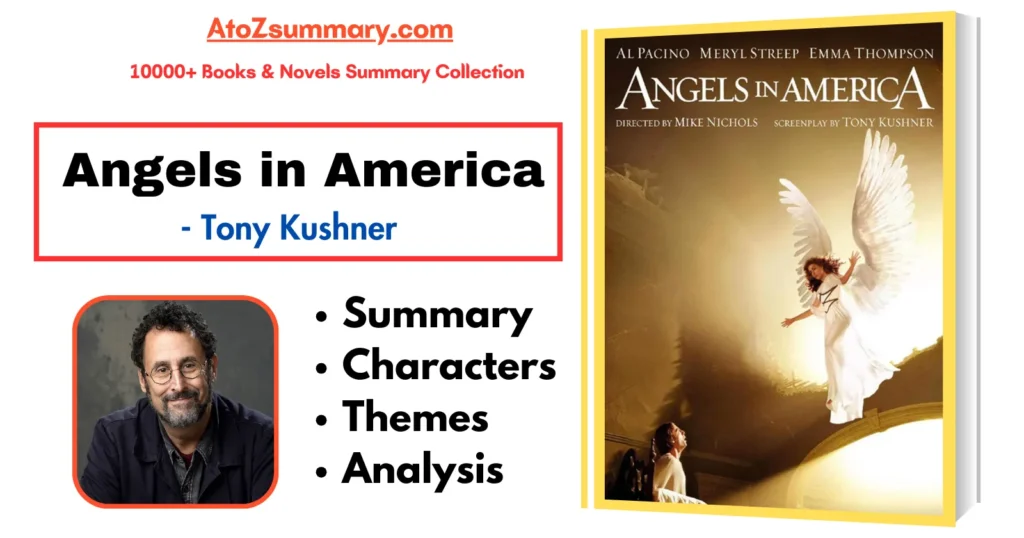
About Poem: Kubla Khan
| Poem Title | Kubla Khan |
| Author | Samuel Taylor Coleridge |
| Date of Writing | 1797 (partly composed in a dream) |
| Genre | Romantic poetry |
| Style | Lyric poetry, written in first person |
| Form | 54-line poem (originally intended to be much longer) |
| Themes | Imagination, creativity, nature, the divine, dreams |
| Setting | Inspired by Xanadu, the palace of Kubla Khan in China |
| Imagery | Rich and vivid, featuring natural and exotic elements |
| Key literary devices | Imagery, symbolism, and personification |
| Publication | Published in 1816, in the collection “Christabel, Kubla Khan, and the Pains of Sleep” |
| Famous lines | In Xanadu did Kubla Khan A stately pleasure-dome decree: Where Alph, the sacred river, ran Through caverns measureless to man Down to a sunless sea. |
Kubla Khan Poem
In Xanadu did Kubla Khan
A stately pleasure-dome decree:
Where Alph, the sacred river, ran
Through caverns measureless to man
Down to a sunless sea.
So twice five miles of fertile ground
With walls and towers were girdled round;
And there were gardens bright with sinuous rills,
Where blossomed many an incense-bearing tree;
And here were forests ancient as the hills,
Enfolding sunny spots of greenery.
But oh! that deep romantic chasm which slanted
Down the green hill athwart a cedarn cover!
A savage place! as holy and enchanted
As e’er beneath a waning moon was haunted
By woman wailing for her demon-lover!
And from this chasm, with ceaseless turmoil seething,
As if this earth in fast thick pants were breathing,
A mighty fountain momently was forced:
Amid whose swift half-intermitted burst
Huge fragments vaulted like rebounding hail,
Or chaffy grain beneath the thresher’s flail:
And mid these dancing rocks at once and ever
It flung up momently the sacred river.
Five miles meandering with a mazy motion
Through wood and dale the sacred river ran,
Then reached the caverns measureless to man,
And sank in tumult to a lifeless ocean;
And ’mid this tumult Kubla heard from far
Ancestral voices prophesying war!
The shadow of the dome of pleasure
Floated midway on the waves;
Where was heard the mingled measure
From the fountain and the caves.
It was a miracle of rare device,
A sunny pleasure-dome with caves of ice!
A damsel with a dulcimer
In a vision once I saw:
It was an Abyssinian maid
And on her dulcimer she played,
Singing of Mount Abora.
Could I revive within me
Her symphony and song,
To such a deep delight ’twould win me,
That with music loud and long,
I would build that dome in air,
That sunny dome! those caves of ice!
And all who heard should see them there,
And all should cry, Beware! Beware!
His flashing eyes, his floating hair!
Weave a circle round him thrice,
And close your eyes with holy dread
For he on honey-dew hath fed,
And drunk the milk of Paradise.
Themes: Kubla Khan
The themes of poem “Kubla Khan” are:
- Imagination and Creativity: The poem celebrates the creative process and the power of the human imagination. Coleridge conveys how poetry is born from dreams and visions.
- The Sublime and the Beautiful: Coleridge contrasts the wild and untamed aspects of nature with the calm and serene, exploring the idea of the sublime in nature’s grandeur and beauty.
- Nature’s Relationship with the Divine: The poem delves into the idea of nature as a reflection of the divine. The landscape in the poem represents a sacred, almost supernatural, space.
- The Influence of Dreams: Coleridge himself claimed to have dreamt part of the poem, emphasizing the importance of dreams and the unconscious mind in the creative process.
- Fleeting and Transitory Nature: The poem hints at the impermanence of both nature and human endeavors, emphasizing the ephemeral beauty of the world.
- Artistic Frustration: The interruption in the composition of the poem by a visitor reflects the frustration and limitations of the creative process, highlighting the struggle of the artist.
- Exoticism: Inspired by the Mongol ruler Kubla Khan, the poem incorporates elements of the exotic and the unknown, reflecting the Romantic fascination with far-off and mysterious lands.
Kubla Khan Summary & Analysis
Kubla Khan is a visionary and enigmatic poem written by Samuel Taylor Coleridge, one of the leading figures of the Romantic literary movement in the late 18th century. The poem is known for its rich, dreamlike imagery and its exploration of the creative process. The summary is as follows, stanza by stanza:
Stanza 1
Coleridge begins by describing the enchanting and serene setting of “Xanadu,” the summer palace of the Mongol ruler Kubla Khan. He paints a vivid picture of the place where the “stately pleasure dome” is located, surrounded by walls and towers. The river Alph runs through the area, creating a fertile and idyllic landscape.
Stanza 2
The speaker expresses his desire to build a similar pleasure dome in the realm of poetry, a place of creativity and inspiration. He envisions the river Alph flowing through “caverns measureless to man” and feeding the “sunless sea” where the dome is to be located. This creative ambition reflects the Romantic theme of the power of imagination.
Stanza 3
Coleridge transitions to a darker tone as he describes the arrival of a “woman wailing for her demon lover.” Her song is melancholic and haunting, and she represents a sense of loss or longing. This stanza introduces an element of mystery and sorrow into the poem.
Stanza 4
The poet shifts to describing the landscape itself, which is characterized by strange, supernatural phenomena. He mentions “gardens bright with sinuous rills” and “forests ancient as the hills,” portraying an otherworldly and almost magical atmosphere.
Stanza 5
Coleridge introduces an image of a sacred river that runs through the “enchanted” area, giving life to both the fertile land and the “sunless sea.” This river symbolizes the creative flow of the poet’s imagination, which feeds his art.
Stanza 6
The tone of the poem becomes more urgent and tumultuous. Coleridge describes a vision of chaos and conflict where “Ancestral voices prophesying war” are heard. This can be interpreted as a commentary on the tumultuous creative process, where inspiration and conflict often intermingle.
Stanza 7
The poet longs for the inspiration to recapture his vision of Xanadu, the “sunless sea” and the “woman wailing.” He laments that he cannot fully express the beauty and wonder he has glimpsed in his mind, as it has been disrupted by an interruption from “a man from Porlock.”
Stanza 8
Coleridge concludes the poem by expressing his frustration at the loss of his inspiration and his longing to return to the vivid world he had briefly inhabited. He regrets that the vision has faded, and he can only remember fragments and glimpses of the beauty and creativity he had experienced.
FAQs: Kubla Khan
What is the meaning behind Kubla Khan?
The meaning behind Kubla Khan is the power of the imagination and the creative process.
What is the moral of Kubla Khan?
The moral of “Kubla Khan” is that imagination is powerful, but it can also be fleeting and uncontrollable
Where did Kubla Khan built the dome?
Kubla Khan built the dome in Xanadu.
What is the milk of paradise in Kubla Khan?
The milk of paradise in Kubla Khan is a symbolic reference to spiritual nourishment or enlightenment.
Is Kubla Khan a dream allegory?
Yes, Kubla Khan can be read as a dream allegory.
What is the pleasure dome in Kubla Khan?
The pleasure dome in Kubla Khan is a symbol of imagination, creativity, and the power of dreams.
Why was Kubla Khan unfinished?
Coleridge said that he was interrupted by a visitor while writing the poem, and that he forgot the rest of the poem as it had been developing in his head.











